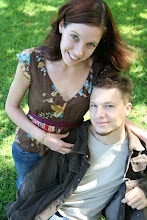Dont cry for us... we´re in Argentina!

Crossing the Bolivian border into Chile, we arrived at San Pedro de Atacama... and for us, it turned out to be a tourist trap, literally. The bus the following day into Argentina was full and the next one wasnt until 5 days later. The only other option was pay US$90 (three times the bus fair) for a seat in a minivan. That or pay to keep hanging out in the Atacama desert just waiting around for the cheaper bus.
Despite the ridiculous price, (someone was making mega bucks and it wasnt the driver on the argentinian side who did most of the work!) the trip into northern Argentina the from Chile was very scenic. From the cactus littered Atacama desert, via more salt flats, we climbed over the Andes once again and then decended through spectacular scenery that seemed to change each hour. The formations and colours were incredible. We have never seen such vivid greens, oranges and purples in soil and rocks before (The colours are due to minerals such as copper.)


Not to mention the twisty roads down the mountains and through the valleys were a motorbike riders heaven! (Wish I had the bike there!)
We met up with the Aussie couple (Sam and Danielle from the Salar tour) for dinner, and being in the land of steaks, we had to try out some carne to see if the hype was correct. (much to Renees disgust, vegetarian options in restaurants are just as difficult to find here!)
Rather than ordering the ¨parrilla¨ (multi course BBQ) due to it containing way too many disgusting entrails and organs, I (Tim) ordered ribs. For $10 Australian, I got about 1/2 kg of ribs. Two strips about 40cms long with large steak sized meat attached that hung over the ends of an oval plate! Probably more meat than I had eaten in the whole trip!
Despite the ridiculous price, (someone was making mega bucks and it wasnt the driver on the argentinian side who did most of the work!) the trip into northern Argentina the from Chile was very scenic. From the cactus littered Atacama desert, via more salt flats, we climbed over the Andes once again and then decended through spectacular scenery that seemed to change each hour. The formations and colours were incredible. We have never seen such vivid greens, oranges and purples in soil and rocks before (The colours are due to minerals such as copper.)


Not to mention the twisty roads down the mountains and through the valleys were a motorbike riders heaven! (Wish I had the bike there!)
We arrived at our first Argentinian town, Salta and immediately noticed big differences between Argentina and the other South American countries we have spent time in. For a start, it was hard telling the difference between tourists and locals. Many of the people look much more european than the ¨mixed¨ and indigenous decendants of Ecuador, Peru and Bolivia. The quality of life and the average wealth is also much higher. Most houses are constructed well, roads almost everywhere are bitumised and smooth, you can get decent food from supermarkets.... and as expected... you have to pay a lot more for it all!
We met up with the Aussie couple (Sam and Danielle from the Salar tour) for dinner, and being in the land of steaks, we had to try out some carne to see if the hype was correct. (much to Renees disgust, vegetarian options in restaurants are just as difficult to find here!)
Rather than ordering the ¨parrilla¨ (multi course BBQ) due to it containing way too many disgusting entrails and organs, I (Tim) ordered ribs. For $10 Australian, I got about 1/2 kg of ribs. Two strips about 40cms long with large steak sized meat attached that hung over the ends of an oval plate! Probably more meat than I had eaten in the whole trip!
Not wanting to do winery tours or day trips back through the countryside we saw on the way into the Argentina, the only thing we did was walk around the town and ride the cable car (Teleferico) up a small hill at the edge of town.
The next stop on our way south to ¨el fin del mundo¨ (end of the world) was Mendoza. A city with wineries as its main attraction, and with everything (including the wineries) being closed on sundays. Guess which day we were there! After the long bus rides, we chose to have a relaxing day in the large park to recover and prepare for yet another long bus ride to Bariloche and the Lakes district.






























































